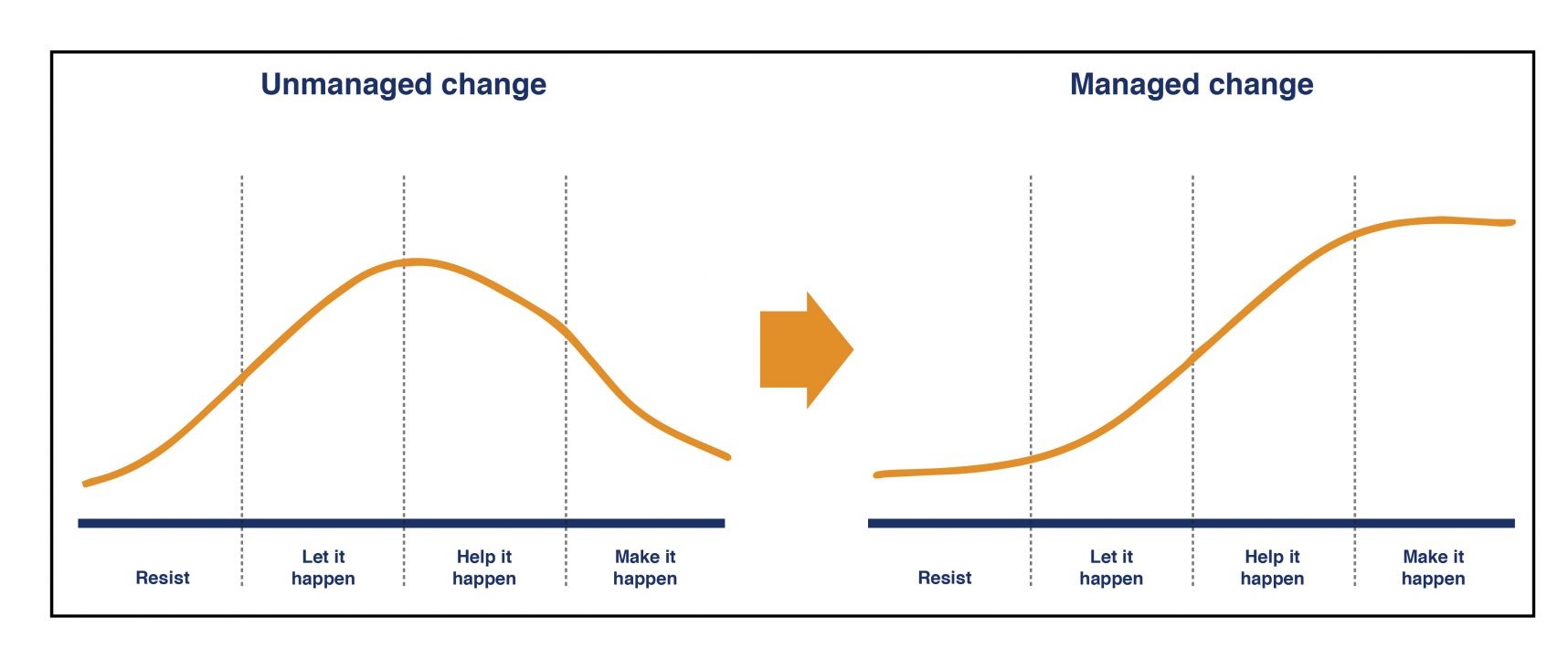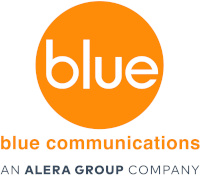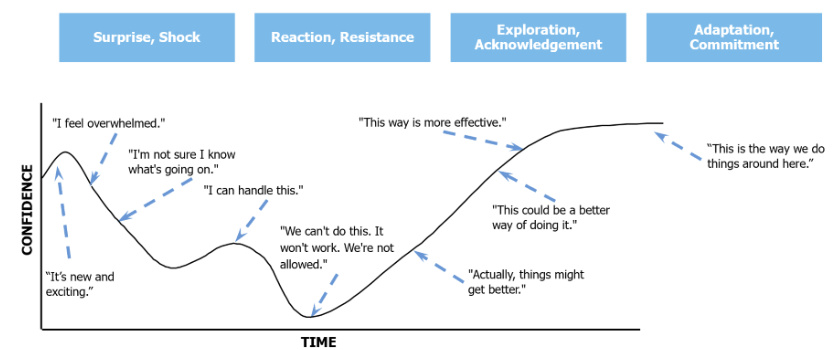Blue’s OCM practice is all about realizing potential through real change. We manage the impact of change that comes with an acquisition, new systems and processes, or changes to an existing program. Our practice is built on six fundamentals designed to help organizations realize the potential sought through change.
Leadership...
sponsorship and active participation at all levels
- True sponsorship of change shows itself when a leader is called upon to explain the context or rationale for change and understands how to build trust.
- Whether it be at the C-level or at the Manager level, there are moments when a leader will need to demonstrate ownership of the change:
- In a hallway conversation
- Responding to a social media post
- In one-on-one or team meetings
True sponsorship is more than tacit head nodding. We’ve seen “buy-in” around the executive conference table. But is it true ownership?
When leaders are owners of change, they are able to explain why the need to change is so important to our shared success story. And, when problems arise, leaders own the solution — they don’t pass it off on IT or HR.
Who Will Tell The Story?
It’s rare within any organization for one change to be the only change taking place. Most times, there are several things taking place at the same time — restructuring (and possible staff reductions), leadership changes, systems implementation, business process re-design, new program introductions.
There’s a story to tell about how these changes are connected to one another. “Who will tell the story?”
A unified leadership team who can connect the dots for employees creates a common story. It also helps avoid employees creating their own version.
Employee Understanding...
of the need for change
Employees at all levels need to recognize the need for change. Whether it’s creating a burning platform (Kotter’s first step) or building Awareness and Desire (ADKAR’s step-by-step approach), the starting point is understanding our stakeholders.
Are they advocates for “new?” Or are they resisting any change? Employees will always exist on the edges of the continuum of readiness. The mass in the middle is where we focus — create a sense of readiness among those who will let change happen.
Managing the change process creates a recognition of need for change. When we move the curve outlined in the diagram below, the organization moves forward one individual at a time. Through stakeholder analysis, we create an action plan that focuses on moving stakeholders from where they currently are to where we want them to be. Part of that action plan is strong communication.
Through stakeholder analysis, we create an action plan that focuses on moving stakeholders from where they currently are to where we want them to be. Part of that action plan is strong communication.
Risk Assessment
A thorough risk assessment uncovers areas of need to ensure that we embed change in the organization. The outcome will tell us where there are risks that will get in the way of reaching our desired outcomes.
The output informs the OCM, telling us where we need to address areas such as programmatic change, engagement of key stakeholders or critical skill gaps.
Support...
reinforced through systems and training
At Blue, we focus on sustainable change. That means not just moving the organization through the immediate change but laying the foundation for the change to be sustained going forward. To do that, we ask these questions:
- What skills are needed in the new world?
- What tools and programs help support employees going forward?
- What programs or systems contradict what we need in the future state?
We then use the answers as part of a detailed analysis where we focus alignment in key areas:
- Talent needs – Is the current approach to talent acquisition going to get the right talent for the future?
- Performance and Rewards systems – Are employees being measured by and rewarded for what’s needed in the future? Or will we continue to provide incentives for what was needed in the past?
- Skills – In addition to training required for new technologies and processes that will be implemented, what other skills need to be developed?
A robust needs analysis in each of these areas uncovers the answers needed to define the OCM strategy.
Measurement...
how we create sustainable success
How will we know if we’re successful?
At Blue, we focus on sustainable change. Measurement points to the likelihood of success in advance of implementation and the outcomes that point to results after implementation.
Before Implementation: Measuring Readiness for Change
In advance of any change taking effect, we can assess whether the organization is prepared for the changes that are coming — that is, at an individual level, are employees seeing the need for change and prepared to adapt to the new world?
As part of our measurement practice, we gauge readiness through:
- Leadership interviews
- Key stakeholder interviews (and more broadly through surveys)
- Employee surveys — 5–10 questions asked at the right time can tell us a lot
It provides us with a view of what might need to be shored up before we implement to make sure employees are ready.
Post Implementation: Measuring Success Outcomes
The goal of measuring success outcomes is to ensure that the change takes hold for the long term. To ensure sustainable change, we measure whether we have achieved success in areas such as:
- Behavior Change — What we want employees to do (or do differently) after implementation. This can be measured in such areas as adoption rates (for example, when introducing new technology platforms). We’ve also tracked the degree to which managers and functional leaders adapt to new processes.
- Efficiencies — Often measured as time savings, efficiencies can be measured in reduction in time to complete processes that have been streamlined – for example, cycle time for financial reporting or reduction in time required to onboard employees. Often, efficiency comes from reducing redundancies in business processes.
- Cost Savings — Reduction in costs can come from a number of areas, including improved processes and more efficient workflow. Other cost savings come in reducing the billing cycle or improved reduction in overtime. As in the case of efficiencies, cost savings also comes from eliminating redundancies and realizing the savings associated with scale.
- Employee Engagement — The effectiveness of the change management process can be gauged through changes in employee engagement. What impact did we have at the individual level? We define expected levels of engagement after implementing change and measure in the short-term and long-term how well we’ve done.
Internal Team Communications
Communication is critical as we think about reaching employees. It’s also critical within the project team with multiple workstreams and team members spread across geographies.
Our PMO includes the discipline required to keep all members of the team involved in the project — connecting them to the broad view.
It combines two of Blue’s foundational competencies: strong communication and strong project management.
Project Management...
tying it all together and delivering on the promise
Multiple workstreams
Multiple external partners
A wide range of stakeholders
A detailed communication plan with varied media elements and a number of moving parts
And the unexpected twists that come along
These are all part of a large change management project that point to a need for strong Project Management Oversight (PMO).
We are rooted in strong project management as the key to managing a successful change and have created standardized tools and processes to organize and ensure the efficiency of every project we lead.
We provide the glue that holds the multiple tentacles of a large-scale change project. It’s in our DNA.

